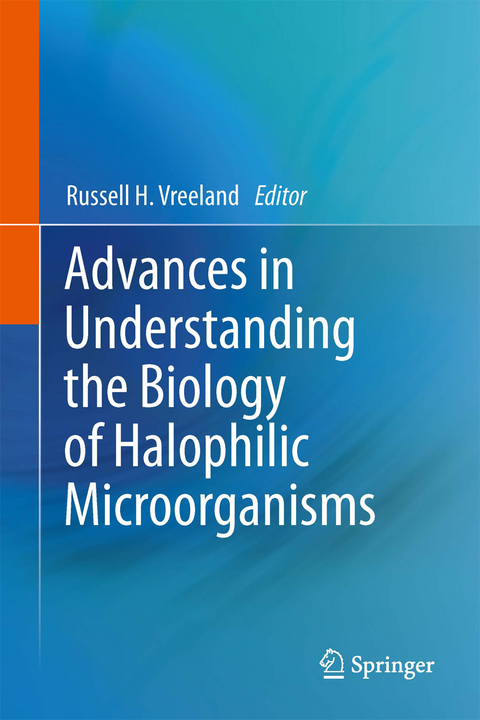Advances in Understanding the Biology of Halophilic Microorganisms
Seiten
This book is designed to be a long term career reference. The chapters present modern procedures. This is a how-to-book with a difference. These chapters:
- reveal the background information about working with salt loving organisms,
- are loaded with information about how experiments are conducted under high salt,
- provide information about analyses that work under these conditions and those that may not,
- present a wide range of details from laboratory designs to equipment used and even to simple anecdotal hints that can only come from experience.
Microbiological training focuses largely on the growth, the handling and the study of the microbes associated with humans and animals. Yet the largest proportion of the Earth’s microbiota lives in saline environments such as the Oceans, saline deserts and terminal hypersaline environments. This need for salt can be intimidating for those interested in entering the field or for those interested in understanding how such research is accomplished.
- reveal the background information about working with salt loving organisms,
- are loaded with information about how experiments are conducted under high salt,
- provide information about analyses that work under these conditions and those that may not,
- present a wide range of details from laboratory designs to equipment used and even to simple anecdotal hints that can only come from experience.
Microbiological training focuses largely on the growth, the handling and the study of the microbes associated with humans and animals. Yet the largest proportion of the Earth’s microbiota lives in saline environments such as the Oceans, saline deserts and terminal hypersaline environments. This need for salt can be intimidating for those interested in entering the field or for those interested in understanding how such research is accomplished.
1. Approaches toward the study of halophilic microorganisms in their natural environments: who are they and what are they doing?. - 2. Media and Conditions for the Growth of Halophilic and Halotolerant Bacteria and Archaea. - 3. Taxonomy of Halophilic Archaea and Bacteria. - 4. Halophilic Viruses. - 5. Microorganisms in Evaporites: A review of modern Geomicrobiology. - 6. Searching for microbes and DNA in ancient halite. - 7. DNA Replication and Repair in Halophiles. - 8. Gene Transfer Mechanisms, Population Genetics/Genomics and the Evolution of Haloarchaea. - 9. Worth Your Salt: Halophiles in Education. - 10. Halophiles in the Public Media.
| Zusatzinfo | 20 Illustrations, black and white; VIII, 241 p. 20 illus. |
|---|---|
| Verlagsort | Dordrecht |
| Sprache | englisch |
| Maße | 155 x 235 mm |
| Themenwelt | Medizin / Pharmazie ► Studium |
| Naturwissenschaften ► Biologie ► Mikrobiologie / Immunologie | |
| Naturwissenschaften ► Biologie ► Ökologie / Naturschutz | |
| Schlagworte | geomicrobiology • halophiles • Halophilic microbes • hypersaline environments • Hypersaline viruses |
| ISBN-10 | 94-007-5538-4 / 9400755384 |
| ISBN-13 | 978-94-007-5538-3 / 9789400755383 |
| Zustand | Neuware |
| Haben Sie eine Frage zum Produkt? |
Mehr entdecken
aus dem Bereich
aus dem Bereich
Allgemeine Grundlagen und spezielle Anwendungen
Buch | Softcover (2021)
Springer Berlin (Verlag)
54,99 €




